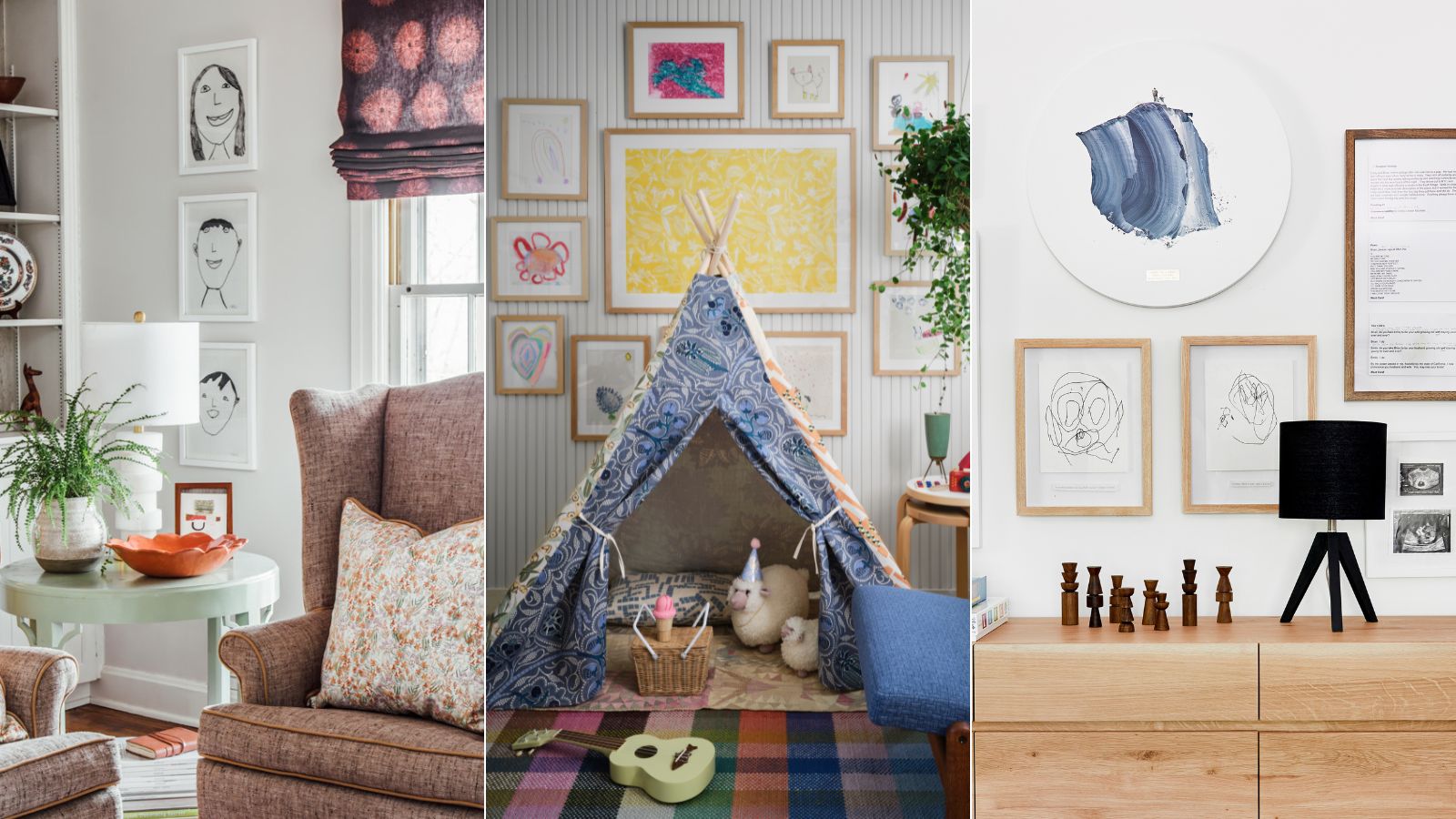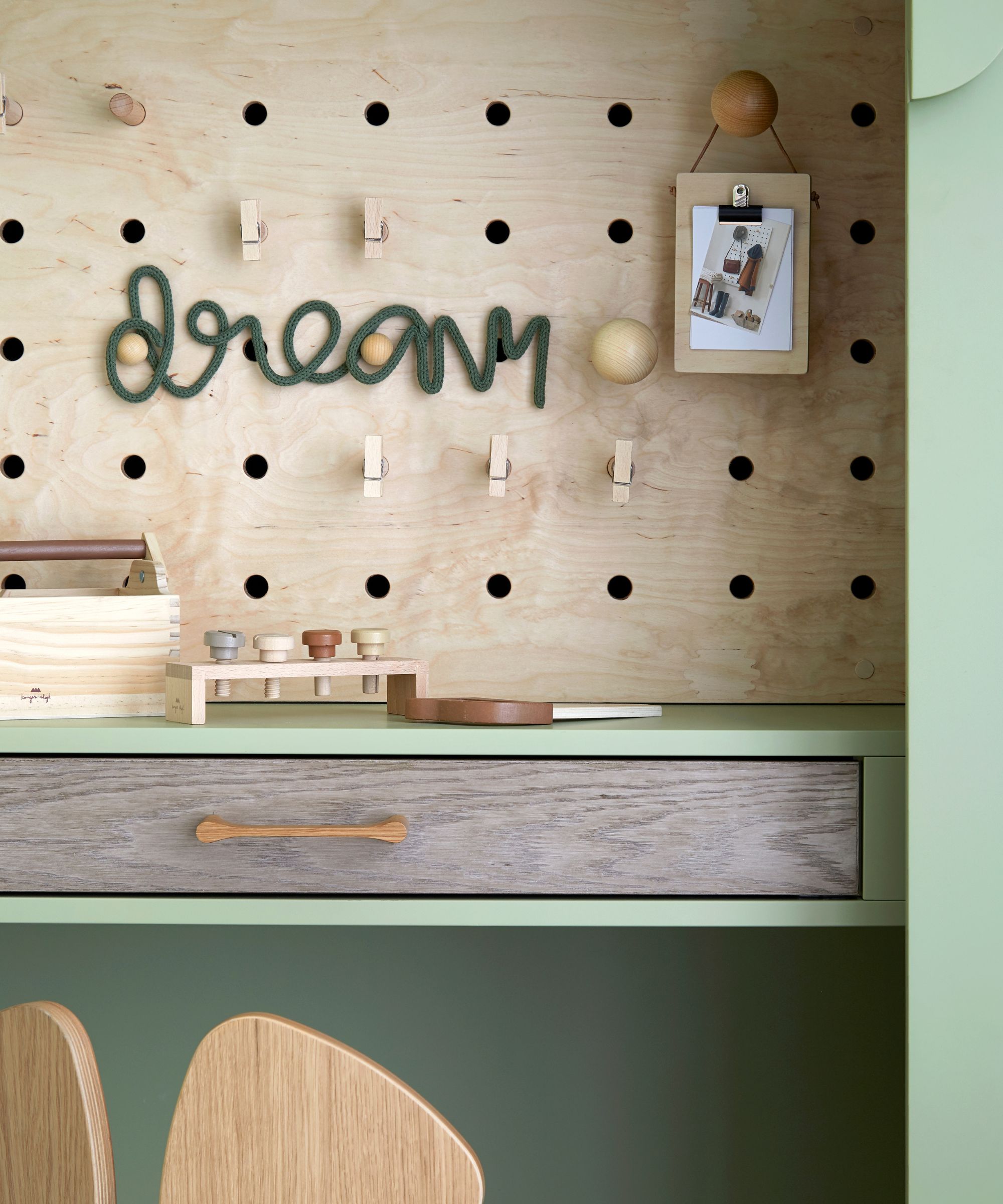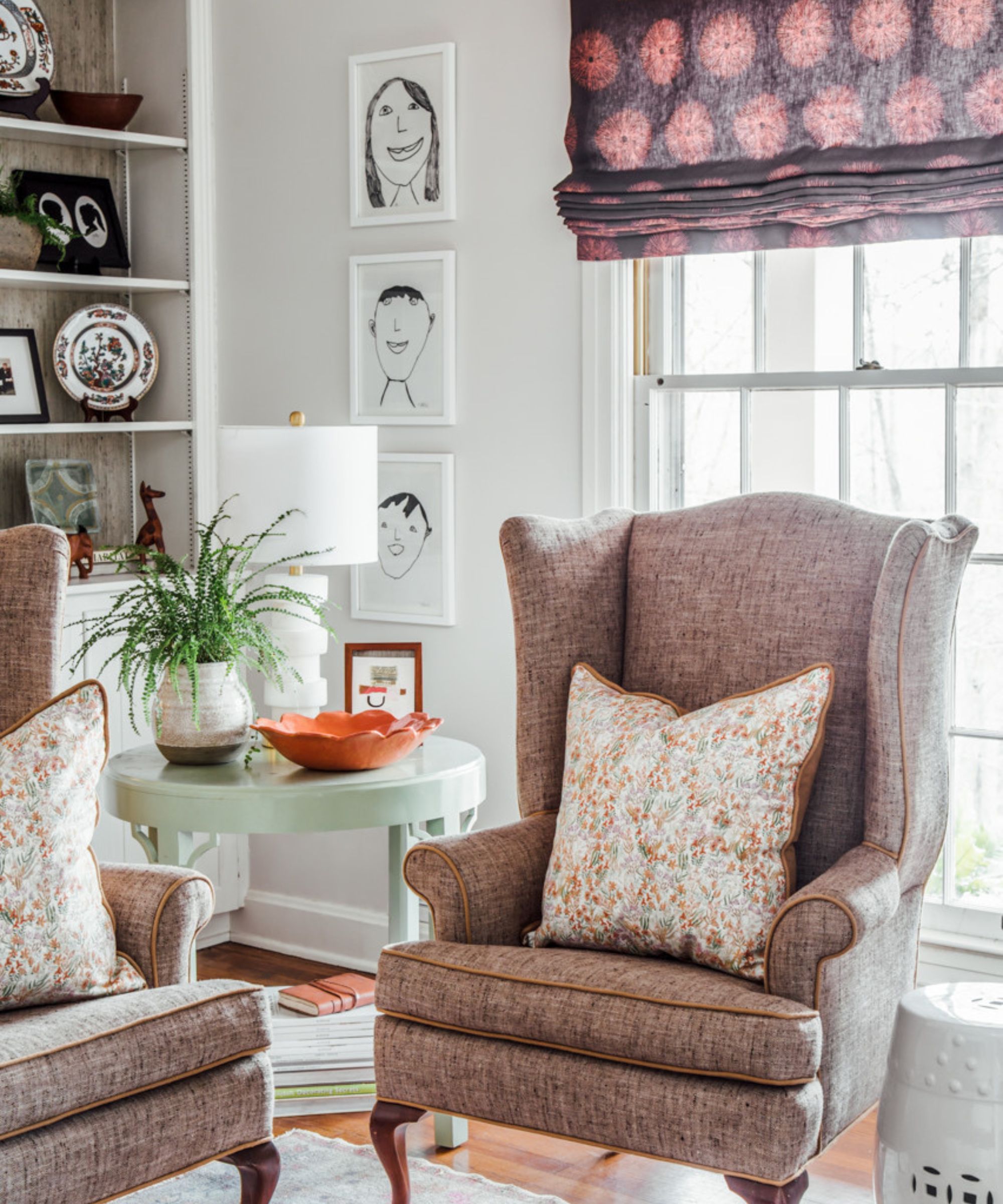How to display children's artwork without disrupting your decor, according to interior designers
Put down the fridge magnets, this is how to showcase your kid's masterpieces like an interior designer


Finding creative and stylish ways to display your children's art in a way that suits your home can feel like a tall order. From finger-painted blobs to stick-figure family portraits and crayoned houses, you're going to receive a lot of 'creations' from your kids over the years. And while they spark both pride and joy, they don't always match your carefully curated home decor. So, it's time to put down the fridge magnets and listen to the experts.
There are a number of creative ways to manage the artwork overload that doesn't rely on stuffing it all into a drawer, wallpapering your fridge with them, or tossing them when they're not looking. Stopping short of relegating their drawings to your children's bedrooms, finding solutions that will allow you to showcase their pieces without compromising on style is the key.
To find out how the professionals manage it, we asked interior designers to weigh in with their best tips, tricks, and design solutions to displaying kid's artwork and stay on top of the mound of masterpieces.
Creative ways to display kid's art in your home
The creative output from little ones can be overwhelming, but have you considered it could also be the key to truly crafting a home that speaks to the people - big and small - that live within its walls?
'Kids artwork can elevate any space and not feel like the old "kids artwork on the fridge" vibe of the past,' says designer Montana Labelle. It's true - adding both an eclectic charm and a wave of nostalgia to your walls (particularly if your artists are now grown), the masterpieces painted, glued, and glittered by your children can be some of your most treasured works of art.
So, how do you make them shine? With a little help from the experts, we've put together everything from gallery wall ideas to framing tips that will steer you on the right course to displaying your kid's artwork like a pro.
1. Add into a gallery wall

A gallery wall is a great way to curate your children's art by mixing in with photographs, prints, and paintings of both old and new and hanging together as a cluster. This not only allows you to show personality in your home but also means your kids can still see their pieces lovingly displayed - without pulling all the focus.
Design expertise in your inbox – from inspiring decorating ideas and beautiful celebrity homes to practical gardening advice and shopping round-ups.
In the home of designer Emily Henderson, there's a mix of her children's art, photo booth strips, and vows from her wedding to create a unique display of pieces that truly reflect her family. The key, she explains, is framing.
'You want to make sure that you frame their art like you would a professional piece. That doesn't mean you need to spend a ton of money but for example, float mounting a piece in a simple frame is going to look cool and modern,' Emily advises.
Taking to Instagram, Emily shows exactly how to achieve that perfect balance of family and style in the video below.
A post shared by Emily Henderson (@em_henderson)
A photo posted by on
'It's a very personalized, very sentimental art gallery wall,' explains Emily, who chose to curate her display in the family room of her mountain house. 'We float mount [rough edges and all] to make them look more elevated,' she adds. The color palette chosen and the simple frames help to make this look considerably more grown up than a hodge podge of kid's drawings.
Another tip from Emily? Getting your kids to add a quote or signature to their drawing to give the air of a museum display. The children will love doing it, and it helps you to recall those precious memories with a date and time stamp to look back on.
Designer Kathy Kuo is also a fan of the family-style gallery wall. 'I have my kids' work mixed into a gallery wall in my dining room and I love the way it adds personality to the room. 'I also have special shelves set up where my kids can prop their latest creations up alongside their favorite picture books and some art prints of their fave movie characters, like Totoro.'
No matter what you feel about the actual artwork, a great frame makes all the difference. 'As a mom-of-two myself, I love bringing my children's artwork into my home decor in a way that celebrates their creativity and also complements my other decor pieces. It's really as simple as framing paintings and drawings in frames that match well with any other frames you have up.'

Kathy Kuo is a celebrated interior designer and international guru within the home and lifestyle space. She has 20+ years of experience in the design industry.
2. Hang with clips and pegs

Get creative with pegs, garlands, clips, and clipboards to hang an ever-changing display. This playroom design by children's interior designer Joanna Landais, of Eklektik Studio, incorporates a peg board with clips and hooks for a whimsical display. 'Introduce a delightful way to showcase your little one's artistic masterpieces with the peg board gallery,' says Joanna.
Kids can clip up their own art, you don’t need to shop for perfectly sized frames, and it’s an easy and less permanent solution.
'The peg board, adorned with a variety of clips, provides a versatile and easily customizable platform to exhibit their artwork,' explains Joanna. 'Each piece finds its place on the board, creating a dynamic and ever-evolving gallery that is easily accessible to a young artist,' she adds.
Not so keen on the pinboard design? Try hanging a simple garland for them to curate their artwork with clothes pegs that they can decorate themselves, too. Or perhaps a more contained display of clipboards might appeal more. Assign each child their own clipboard that they can add to, and hang them on the wall for a neater exhibit.

Joanna Landais is a renowned children's interior designer based in London. With her keen eye for colour and a creative spirit, she has been transforming ordinary spaces into captivating and inspiring environments for children for nearly a decade.
3. Created a dedicated 'art wall' space

A far cry from hiding their creations in a drawer (or the trash), try declaring one room, wall, or nook of your home as the "art zone" and treat it as a dedicated display like designer Jessica Jubelirer has created here.
'Displayed in a gallery of coordinated light wood frames and artfully arranged, my children’s wonderfully colorful and imaginative artworks perfectly complement all that goes on in our playroom space,' says Jessica. Your kids will love having a special place just for their art that they can keep adding to, and you can then curate a scheme for the rest of that space that works with their artistic expressions rather than working against them.
Essentially, by committing an area of your home to their art, you can find that sweet spot between wanting to showcase your little one's designs and not wanting to hinder the aesthetics of your main living spaces. As designer Bethany Adams explains, 'kids and their parents alike want to see their artistic genius on display, which can be a challenge to do in a chic and artful way.'
'The mudroom, a back stair, or similar are a great place for the family to enjoy this ever-changing gallery, without sacrificing the decor of the rest of the home,' she advises. 'I like to use Little Davinci art frames in different sizes (take note of what paper sizes most often come home from school) to make a gallery wall in a private area of the home,' Bethany adds.

Bethany Adams is an interior designer, a member of ASID (American society of Interior Designers), AIA (American Institute of Architects), and a certified interior designer with the Kentucky Board of Architecture. Bethany holds a B.F.A.. in interior design from Harrington College of Design in addition to a B.A. she earned from Georgetown University.
A post shared by Studio McGee (@studiomcgee)
A photo posted by on
It's a similar technique that Shea McGee of Studio McGee employed in the craft room of her own home. Using a little room off of their kitchen, the McGee family were able to carve out a space that's evolved over time to work as both a studio and museum for the children's arts and crafts.
The Dream Home Makeover star shared a tour of their craft room via her Instagram, where she proved that a display of kid's art doesn't need to be big and bold. 'I wanted to showcase things with personality. So I gathered some of the girl's hair bows and I decided to put them on a linen mat and framed them,' she explains. 'And then also showcase some of their artwork and mix in some pieces that I've collected. I just love that it feels eclectic but pulled together,' Shea continues.
Her method of displaying their scribbles? A simple cluster of drawings clipped together and zoned with picture lights to elevate the entire look, making it appear more deliberate in style. Shea also has an oversized cabinet in her craft room to house paper, paint, and markers, and to use as a catch-all for all their projects.
4. 'Commission' your kids to create something bespoke

If you're adamant that a colorful collage of art will simply not work in your more grown-up spaces - and you aren't lucky enough to be able to fabricate a separate playroom or craft room - try corralling your young artists into creating something bespoke. This way, you can strike the perfect balance between your vision for that space, and still finding a spot to show off their crafts in a way that feels meaningful to you both.
'I love mixing in children’s pieces in a gallery to create this balance between serious and ornate versus playful and simple, but if a gallery isn’t an option, I love the look of little one’s self-portraits drawn on card stock with a sharpie,' says Monica Stewart of The Misfit House.
Make an event out of challenging them to create a piece specially for your living room/kitchen/dining room using limited supplies in your chosen palette. Try Sharpies for something minimal, tester pots of paint already used in that room for a cohesive feel, or go one step further and provide them with a remnant of wallpaper or fabric to scribble upon and hang them strategically for a polished result.
Tom Rutt of TR Studios agrees. 'Displaying your children’s artwork adds a wonderful personal touch that makes a house feel a lot more like a home.' And if all else fails, simply gather everything together in a large frame with plenty of white space. 'To avoid cluttered and messy walls, collate their artistic masterpieces together to make large collages which you can hang in thin, sleek frames,' he advises.

TR Studios is a London based architecture and interiors practice working on projects internationally. Tom Rutt has worked in the offices of Norman Foster and Michaelis Boyd before founding TR Studios in 2015.
There's certainly some trial and error involved in finding the right method, space, and design in which to display your children's artwork at home - and doing so in a way that reflects both your home and your family.
By consulting the experts, we've been able to decipher the most stylish of tips and tricks used by interior designers to hopefully inspire you to achieve a family-style exhibit that speaks to you and yours.
Of course, there is no right or wrong way to showcase their art but rest be assured that whichever style you choose, your kids will be thrilled that you want to hang them with pride. And, if the fruits of their creative outputs all become a bit too much... simply mail a few drawings out to grandparents!

Charlotte is the style and trends editor at Homes and Gardens and has been with the team since Christmas 2023. Following a 5 year career in Fashion, she has worked at many women's glossy magazines including Grazia, Stylist, and Hello!, and as Interiors Editor for British heritage department store Liberty. Her role at H&G fuses her love of style with her passion for interior design, and she is currently undergoing her second home renovation - you can follow her journey over on @olbyhome